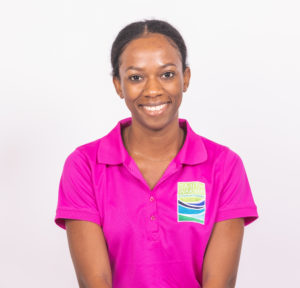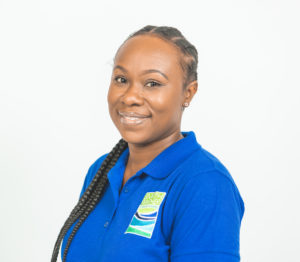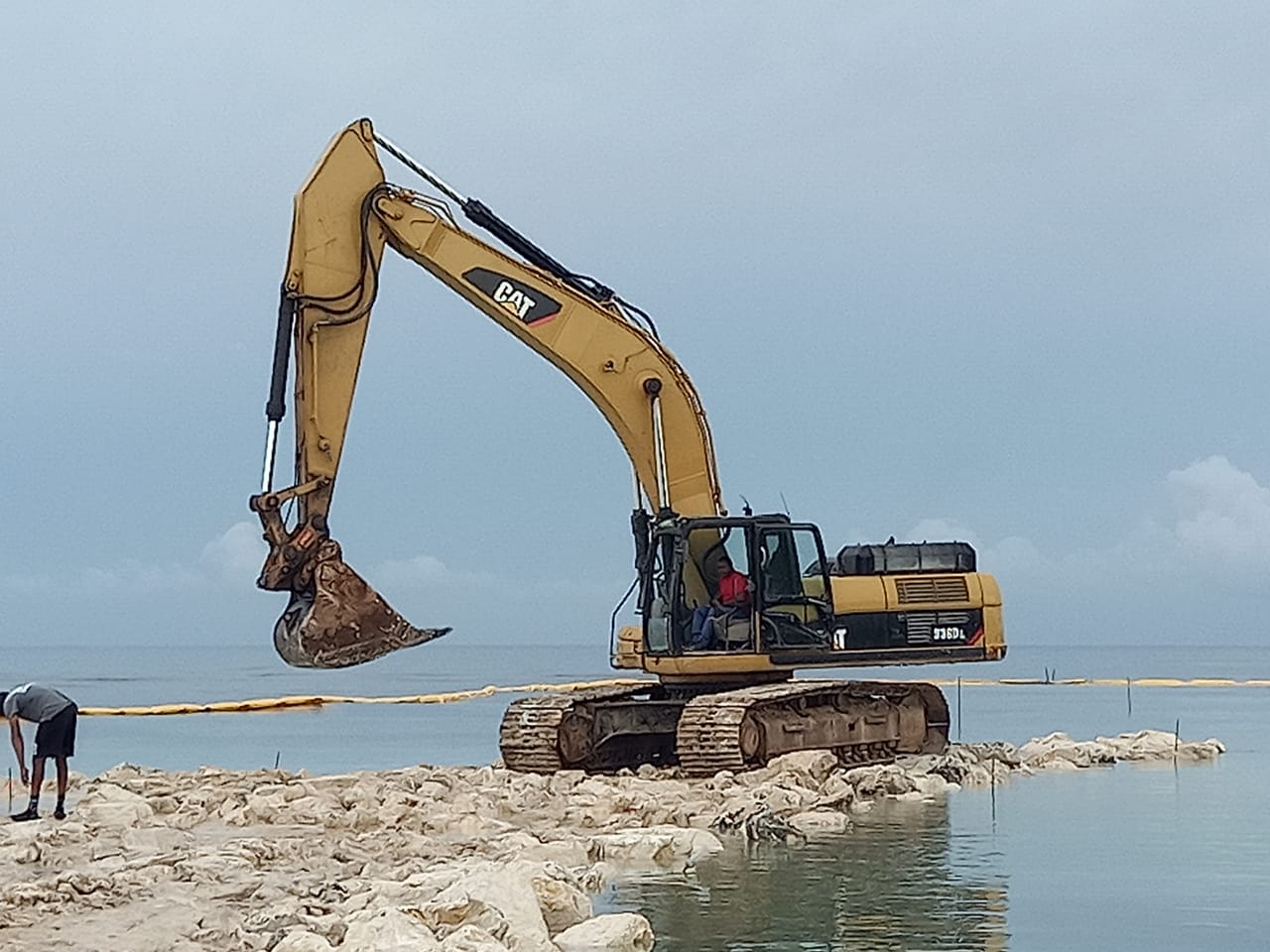Smith Warner International is unique among engineering firms in that more than 40 percent of the workforce are women. Many of them are professional engineers and STEM-oriented specialists in environmental science, numerical modelling, and GIS. With International Women in Engineering Day approaching on 23 June, we review how the industry is changing, the motivation for women to work in this field, and the challenges many still face.
There has been a push in Jamaica and in many other parts of the world to encourage more women to enter the engineering field. Although there have been gains, as a percentage of the labour force women still lag behind men noticeably in engineering. In the U.S., women make up only 15% of all engineers (the US Census Bureau has some great graphics). The U.K.’s Women in Engineering Society (WES) reports that in 2021 women made up just 14.5% of all engineers, though that is a 25.7% increase over the 2016 numbers. Possibly more telling is that only half as many girls ages 16-18 as boys say they would consider a career in engineering.
 In order to educate and train more female engineers, university programs must be supportive of female students and encourage them to enter and continue in degree programs. Smith Warner’s Junior Project Engineer Moesha Henry was the “Top Civil Engineering Graduate” of the University of the West Indies in 2019 and received the Jamaica Institution of Engineers’ “Most Outstanding Jamaican Engineering Student” award. Yet she remembers, “The disparity between how female and male students were treated was very much evident…Lecturers would mainly interact with the core group of males who sat at the front. This eventually changed after a while when some lecturers noticed the pattern in who were the top performing students in the classes. With no surprise and without bias, they were mostly females.”
In order to educate and train more female engineers, university programs must be supportive of female students and encourage them to enter and continue in degree programs. Smith Warner’s Junior Project Engineer Moesha Henry was the “Top Civil Engineering Graduate” of the University of the West Indies in 2019 and received the Jamaica Institution of Engineers’ “Most Outstanding Jamaican Engineering Student” award. Yet she remembers, “The disparity between how female and male students were treated was very much evident…Lecturers would mainly interact with the core group of males who sat at the front. This eventually changed after a while when some lecturers noticed the pattern in who were the top performing students in the classes. With no surprise and without bias, they were mostly females.”
Importantly, Moesha notes, there were some professors (notably Smith Warner International co-founder and current Director of Quality and Innovation, Dr. David Smith), “who really emphasised the importance of women in the field, always made sure we were included in class discussions as well as demanded that the male students treat us fairly and with respect inside and outside of the classroom. I was very grateful for this.”
 When Moesha’s sister, Yackesha, decided to make a career change, she returned to the University of the West Indies to work toward none other than a degree in Civil Engineering. “I had been watching how the field has been evolving, especially in Jamaica, and my eyes were wide open.” Fortunately, Moesha already was working in the field and was a willing mentor. Yackesha adds, “In total, there are four female engineers within the immediate work circle, which is quite cool. And having access to some of the most talented female engineers at Smith Warner puts the icing on the cake.” Yackesha describes motivating figures outside of the office as well. “I continue to be inspired by other strong, powerful women in our society including (track and field champion) Shelly-Ann Fraser-Pryce, who is doing a superb job with managing her career and family life.”
When Moesha’s sister, Yackesha, decided to make a career change, she returned to the University of the West Indies to work toward none other than a degree in Civil Engineering. “I had been watching how the field has been evolving, especially in Jamaica, and my eyes were wide open.” Fortunately, Moesha already was working in the field and was a willing mentor. Yackesha adds, “In total, there are four female engineers within the immediate work circle, which is quite cool. And having access to some of the most talented female engineers at Smith Warner puts the icing on the cake.” Yackesha describes motivating figures outside of the office as well. “I continue to be inspired by other strong, powerful women in our society including (track and field champion) Shelly-Ann Fraser-Pryce, who is doing a superb job with managing her career and family life.”
Georgeann Henry, who recently earned a Bachelor’s of Science in Civil Engineering, credits her mother as her most important mentor. “I wouldn’t be where I am today if it weren’t for her. She believed in me every step of the way. She reassured me and motivated me.”
There is lots of research advocating mentoring as an important aspect of career development, especially in fields with a large gender disparity. All of the women with whom we spoke echoed the desire for more formal mentoring as well as the hope to become mentors to others. But there is an understanding that aside from their careers, women often carry a large load of other responsibilities which can limit the extra time they are able to spend at work beyond their primary jobs.
COVID also sharply limited the amount of time young engineers spent together with more senior colleagues. But now that professionals are returning in person, learning and mentoring opportunities have the potential to increase. When she first began working at Smith Warner, Moesha spent a month in the office before heading out to the construction site in St. Thomas. She explains, “My colleagues extended a lot of advice to me and were very helpful. I feel like I have built solid professional relationships if not friendships with some of my colleagues in a short period.”
 Working in an office versus out on a project site presents very different conditions for female engineers. Georgeann, who works as a Junior Construction Supervisor at Smith Warner and often serves as the firm’s daily representative in the field, describes the differences she first noticed between university, where she was often a group leader, and the construction sites she now helps supervise: “It was a bit of a culture shock. I was working under extreme weather conditions. It took a lot of dedication, long hours, sacrifice, tears, and a lot of faith… It’s not the norm for a female to be out in the field as much. Usually, you’re doing mostly design. At times, they’re not receptive to a young female coming out of university and giving instructions.”
Working in an office versus out on a project site presents very different conditions for female engineers. Georgeann, who works as a Junior Construction Supervisor at Smith Warner and often serves as the firm’s daily representative in the field, describes the differences she first noticed between university, where she was often a group leader, and the construction sites she now helps supervise: “It was a bit of a culture shock. I was working under extreme weather conditions. It took a lot of dedication, long hours, sacrifice, tears, and a lot of faith… It’s not the norm for a female to be out in the field as much. Usually, you’re doing mostly design. At times, they’re not receptive to a young female coming out of university and giving instructions.”
Moesha echoes those feelings, “Working outside of the office for Smith Warner, I do realise the atmosphere is different.” She says she has felt “like I needed to make extra effort to be heard, to voice my concerns and speak on behalf of women who sometimes did not have the courage to do so. This applies to both interaction with colleagues and clients.”
Yet all three of these dedicated female engineers appear optimistic about growth potential for themselves and others in the engineering field. Georgeann explains, “Over time you get the respect that you work so hard for.” Moesha sees workplace standards improving as firms training female engineers set expectations, “I do believe Smith Warner’s standards will eventually have a good impact (on the treatment of women) as well as a good impact on partners and in the field.” Yackesha predicts major changes as the engineering field becomes more open and welcoming to women, “I can assure you, soon the ratio in Jamaica and even worldwide will be 70% to 30%. Female engineers taking over.”


